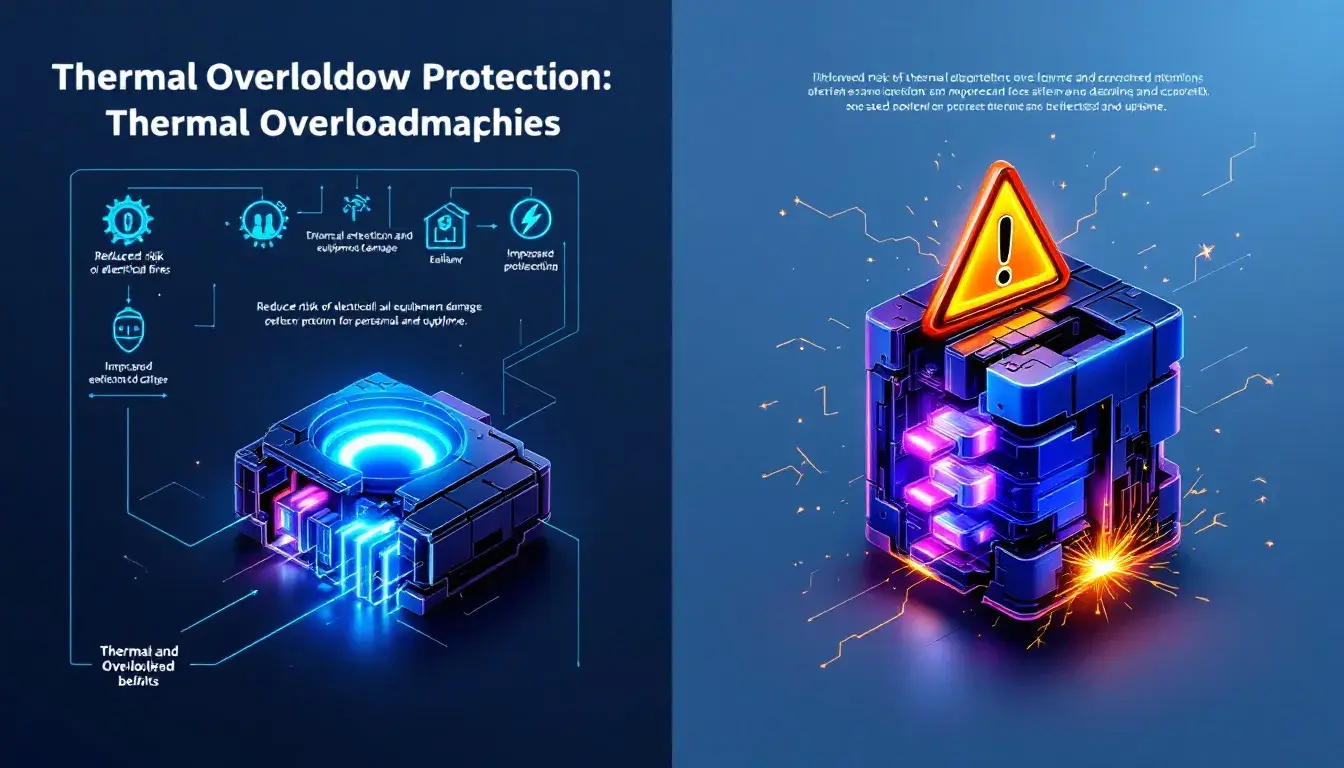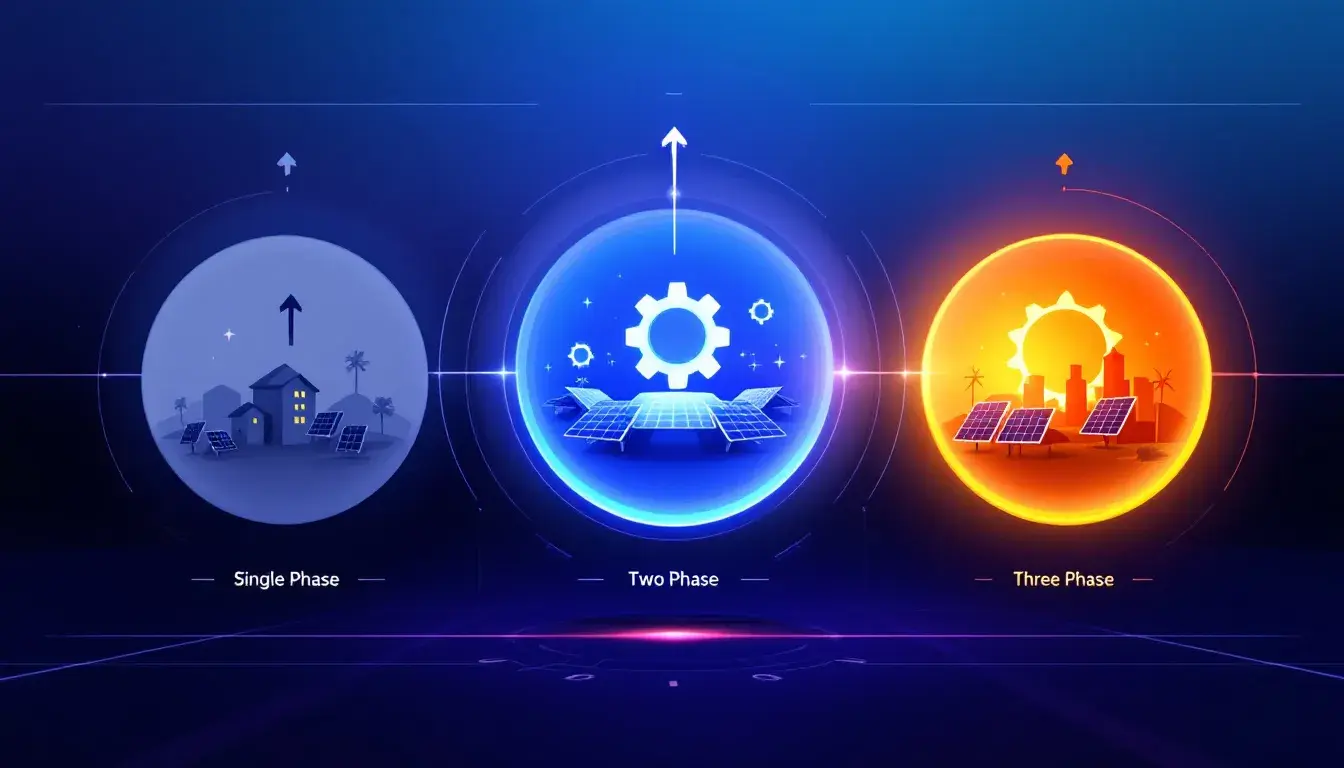Menggunakan Perangkat Arus RCD Untuk Inverter Surya
Daftar isi
BeralihPerangkat arus RCD memutus daya dengan cepat untuk mencegah sengatan listrik dan kebakaran saat mendeteksi adanya kesalahan. Dalam artikel ini, kami menjelaskan apa itu RCD, mengapa RCD penting untuk sistem inverter surya, dan cara memilih yang tepat.
Poin-poin Utama
- Arus Sisa Perangkat RCD (RCD) melindungi dari sengatan listrik dan kebakaran listrik dengan mendeteksi arus bocor dan memutus sirkuit dengan cepat.
- Dalam sistem inverter surya, RCD harus mampu mendeteksi arus gangguan sisa DC, karena RCD AC tradisional mungkin tidak berfungsi dengan baik jika terjadi kebocoran DC.
- RCD Tipe B sangat cocok untuk instalasi surya karena kemampuannya menangani arus gangguan DC, sementara RCD Tipe A dapat melayani beban campuran tetapi mungkin tidak memberikan tingkat perlindungan yang sama.
Apa itu Perangkat Arus RCD?
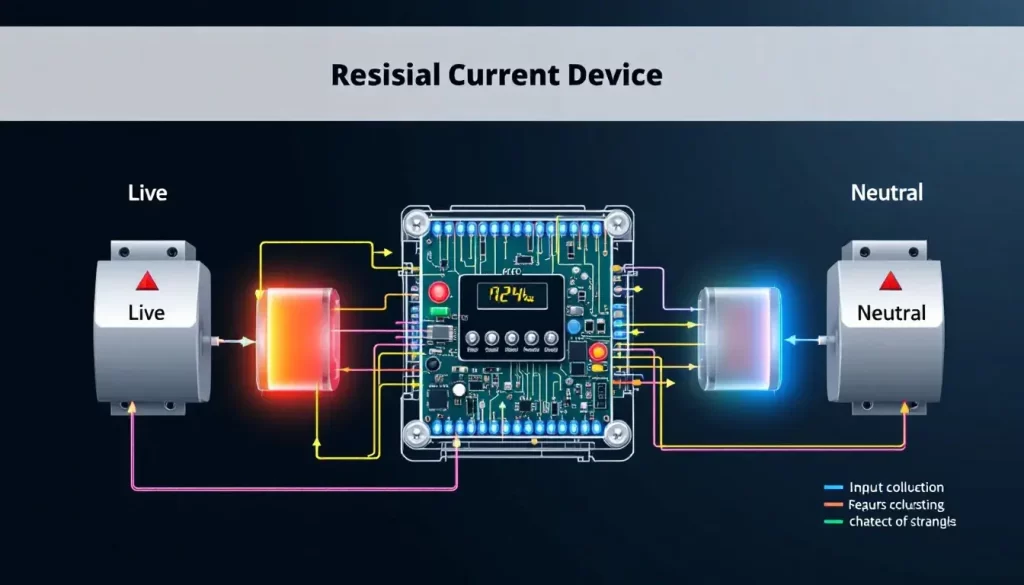
Residual Current Device (RCD) adalah alat keselamatan penting dalam sistem kelistrikan, yang dirancang untuk:
- Mencegah Sengatan Listrik: Segera memutuskan sirkuit ketika mendeteksi kebocoran arus.
- Mengurangi Risiko Kebakaran: Membantu mencegah kebakaran listrik dengan bertindak cepat saat mendeteksi kesalahan.
Bagaimana Cara Kerja RCD?
- Pemantauan Konstan: Ia terus-menerus memeriksa keseimbangan arus listrik yang mengalir melalui kabel hidup dan netral.
- Mendeteksi Ketidakseimbangan: Biasanya, arus yang masuk melalui kabel beraliran listrik harus sama dengan arus yang kembali melalui kabel netral. Ketidakseimbangan mengindikasikan potensi kebocoran, sering kali melalui seseorang, yang dapat menyebabkan sengatan listrik.
- Respon Cepat: Setelah mendeteksi kebocoran arus, RCD memutus pasokan daya dalam waktu sekitar 30 milidetik, secara signifikan mengurangi risiko cedera atau kebakaran.
Fitur Utama RCD
- Perlindungan Terpadu: Sering ditemukan pada unit konsumen, RCD melindungi beberapa sirkuit dalam sebuah bangunan.
- Deteksi Serbaguna: Mampu mengidentifikasi keduanya AC dan DC arus gangguan sisa, meningkatkan keselamatan dengan segera menangani setiap arus gangguan.
Manfaat Menggunakan RCD
- Keamanan Listrik: Melindungi dari sengatan listrik dan gangguan tanah.
- Umur Peralatan: Melindungi peralatan listrik dari hubungan arus pendek, memastikan umur yang lebih panjang.
- Penting untuk Semua Pengaturan: Baik di rumah maupun di lingkungan industri, RCD sangat penting untuk menjaga sistem kelistrikan tetap aman dan terlindungi.
RCD dalam Sistem Inverter Surya
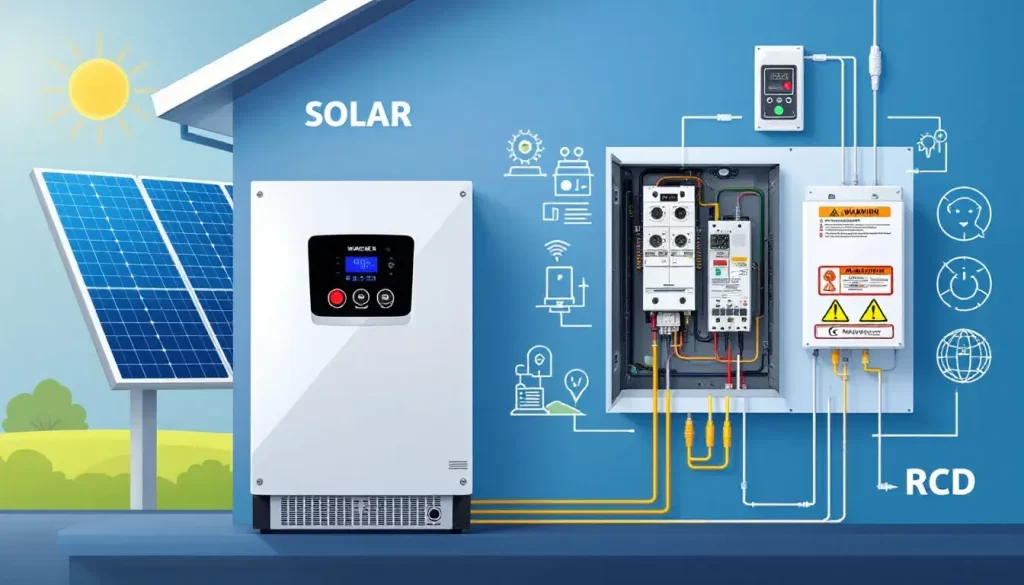
Inverter surya merupakan jantung dari setiap sistem tenaga surya. Mereka mengubah arus searah (DC) yang dihasilkan oleh panel surya menjadi arus bolak-balik (AC) yang memberi daya pada rumah dan bisnis. Proses konversi ini dapat menimbulkan tantangan unik, sehingga membuat Residual Current Devices (RCD) menjadi sangat penting.
Mengapa RCD Penting untuk Inverter Surya
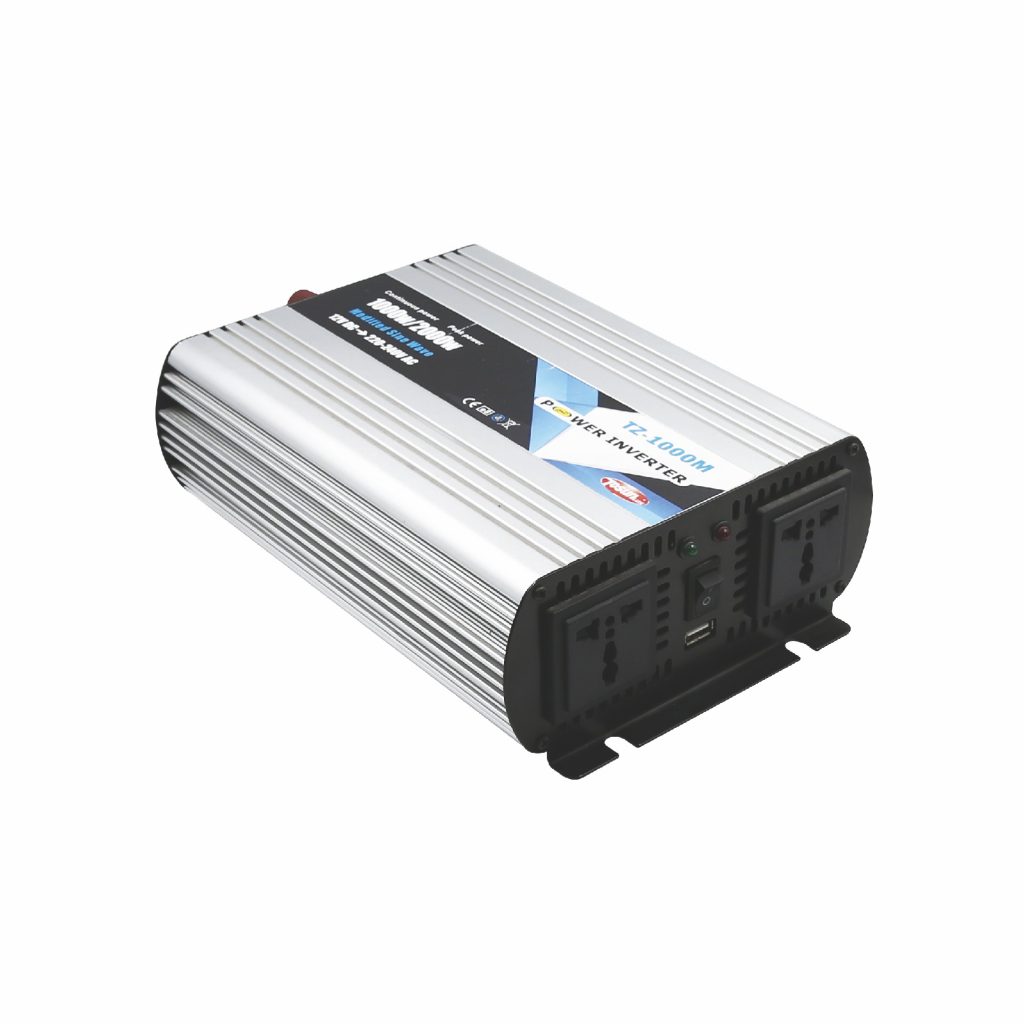
- Kekhawatiran Kebocoran DC: Peralatan elektronik yang rusak, seperti EV inverter atau panel surya, dapat menyebabkan kebocoran arus searah. RCD arus bolak-balik tradisional tidak dapat mendeteksi kebocoran ini, oleh karena itu penanganan komponen arus searah menjadi sangat penting.
- Dampak Arus Gangguan Sisa DC: Jika jenis RCD yang dipilih salah, arus sisa DC dapat mengganggu fungsi RCD. Hal ini dapat memengaruhi keandalan dan keamanan seluruh sistem.
- Perlindungan yang Ditingkatkan: RCD dapat bekerja bersamaan perangkat proteksi lonjakan arus untuk memberikan pertahanan yang kuat terhadap lonjakan arus dan arus sisa. Ini membantu menjaga instalasi listrik dengan proteksi arus berlebih dari berbagai bahaya.
Jenis RCD untuk Inverter Surya
- RCD Tipe B: Ini dirancang khusus untuk menangani arus unik dari inverter surya, termasuk arus gangguan DC. Ini ideal untuk instalasi surya di mana kebocoran DC sering terjadi.
- RCD Tipe A: Mereka dapat mendeteksi arus sisa DC yang bergantian dan berdenyut, sehingga cocok untuk beban campuran. Meskipun tidak sespesialisasi Tipe B, mereka tetap menawarkan perlindungan yang signifikan.
Memilih RCD yang Tepat
Memilih jenis RCD yang tepat sangat penting untuk keselamatan dan kepatuhan terhadap peraturan, terutama dalam sistem dengan arus DC. Beberapa produsen menawarkan RCD non-Tipe B yang dapat menangani arus DC yang lebih tinggi tanpa kehilangan fungsionalitas, sehingga memberi pengguna lebih banyak pilihan.
Dengan memilih jenis RCD yang tepat, kami dapat memastikan perlindungan menyeluruh untuk sistem inverter surya, meningkatkan keselamatan dan efisiensi dalam upaya energi terbarukan kami.
Ringkasan
Memahami peran RCD dalam sistem inverter surya sangat penting untuk memastikan keamanan dan efisiensi. Perangkat ini melindungi dari sengatan listrik dan kebakaran dengan mendeteksi dan merespons arus sisa, sehingga sangat diperlukan dalam instalasi listrik modern.
Dengan memilih jenis RCD yang tepat, khususnya Tipe B untuk menangani arus gangguan DC, kita dapat meningkatkan keamanan dan keandalan sistem tenaga surya kita secara signifikan. Menerapkan langkah-langkah keamanan ini tidak hanya melindungi investasi kita tetapi juga memastikan masa depan energi yang berkelanjutan dan aman.
Blog Terbaru
Permintaan Penawaran
Telp: +86-577-88671000
Surel: ceo@tosun.com
Skype: tosunelektrik
Telepon: +86-139 6881 9286
WhatsApp: +86-139 0587 7291
Alamat: Kamar No.1001 Wenzhou Fortune Center, Station Road, Wenzhou, Tiongkok
PERMINTAAN PENAWARAN
WhatsApp kami
 : +86-139 0587 7291
: +86-139 0587 7291 Bahasa inggris
Bahasa inggris Bahasa Spanyol
Bahasa Spanyol Rusia
Rusia Perancis
Perancis العربية
العربية Portugis Brasil
Portugis Brasil Ukraina
Ukraina Bahasa Turki
Bahasa Turki Bahasa Polandia
Bahasa Polandia Belanda
Belanda Bahasa Italia
Bahasa Italia Bahasa Indonesia
Bahasa Indonesia Bahasa Hindi
Bahasa Hindi اردو
اردو 08:00
08:00 Tambah
Tambah Tidak ada
Tidak ada Mongol
Mongol Bahasa Inggris
Bahasa Inggris Bahasa Inggris Shqip
Bahasa Inggris Shqip Yunani
Yunani
